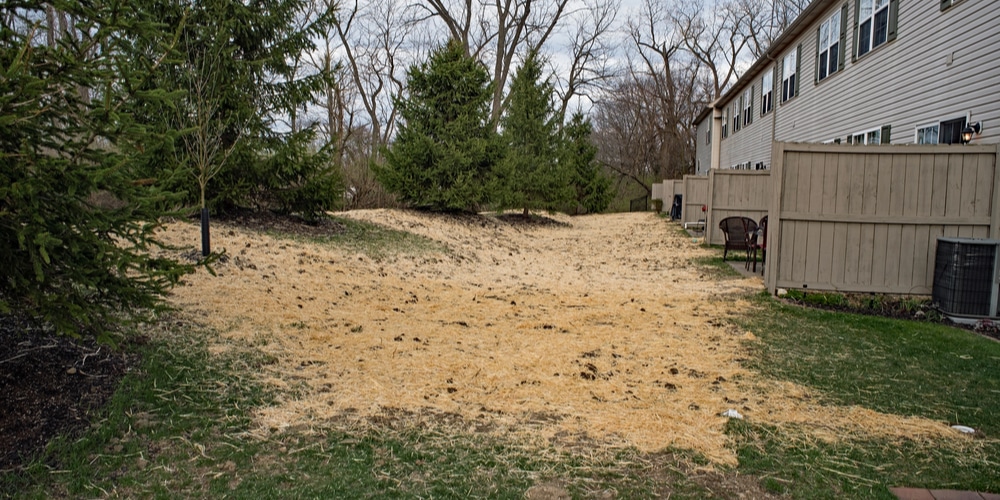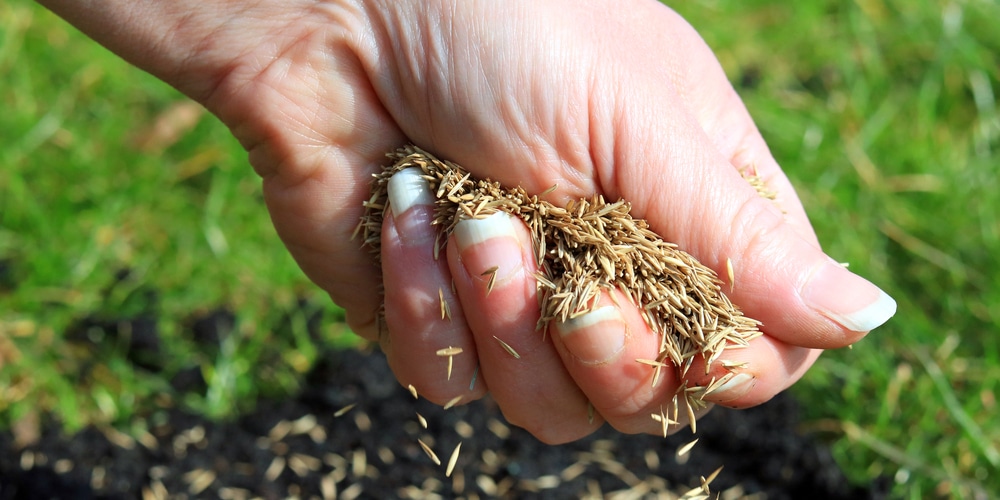Many people know that maintaining turf is a challenging task. Indeed, it takes time, patience, and plenty of effort. And if you decide to sow grass seeds, things can get even more complicated. However, everyone seems to have different opinions on the subject.
If you have tried to grow a lawn before, you might have heard from someone that you need to leave hay on new grass seed. But is this true? And why is this practice something you should consider? You can get answers to these questions (and much more) in this essential guide!
Why Should You Put Hay on Your Lawn?

Some people do this, while others don’t. However, before deciding what to do, you must get familiar with the benefits of leaving hay on new grass seeds.
The objective of applying hay is to help your grass seeds to establish themselves on your lawn. For instance, some people use it to protect themselves from bird attacks (and other animals).
Additionally, hay works as a mulch, which doesn’t only act as a barrier, but also increases water retention and contributes to overall better germination.
Don’t forget that hay isn’t the same thing as straw. The first is green and heavy and contains seed heads. For this reason, some gardeners recommend against leaving it on your lawn.
Indeed, under the ideal growing conditions, hay might sprout in your garden, meaning you’ll have to deal with plenty of weeds in the future, which will harm your turf’s growth.
Instead, straw is yellow, dry, and light. It is an excellent mulch to apply around plants and even grasses. Indeed, its density and composition help retain water in the soil, which comes in handy if you live in a hot and dry region.
Also, it will keep a stable temperature in the ground, minimizing thermal shocks and allowing seeds to establish themselves on your lawn without issues.
How Long Do You Leave Hay On New Grass Seeds?
Applying straw or hay to your grass might be an excellent decision in many aspects. After all, doing it the proper way means protecting your grass seeds from birds, heavy rains, strong winds, and the direct sunlight that might burn them. But how long should you leave hay on your grass seeds?
Usually, gardeners recommend not to remove the cover before the first mowing. So, you’ll have to keep it until your grass blades are at least two or three inches tall.
Sometimes, you won’t even have to remove hay or straw. For instance, when you notice it has started to rot, you shouldn’t spend energy getting rid of it. Instead, leave it on the ground and allow it to decompose.
The process will release precious nutrients that your grass will use to grow. But if the hay is still thick, you can remove it using a garden fork when your grass is tall enough. However, be careful with this procedure: you shouldn’t do it too harshly, or you will damage your grass roots and blades.
Remember how we said that hay might seed? So, if you decide not to remove the protective cover you applied, you will have to keep an eye on weeds that might start growing on your lawn. Take prompt action as soon as you notice something off with your turf. If you can, avoid using chemical products and start with the manual removal and organic solutions first.
How Do You Apply Hay on Grass Seeds?
The process of applying hay to grass seeds isn’t complicated. However, you will have to spread it in an even layer: it should be thick enough to prevent birds (and the external elements) from harming your grass. But don’t overdo it.
After all, air and sunlight must pass through the layer of hay to encourage healthy seedlings. Also, putting too much weight on your seeds might cause difficulties in the germination process.
The amount of hay you should get depends on the size of your lawn. Also, choosing what to use depends on your local climate. For instance, if you live in a humid region, using a layer of straw will do more harm than good. Because it is so thin, it will encourage mold growth, which might increase the chances of fungal infections and other diseases.
